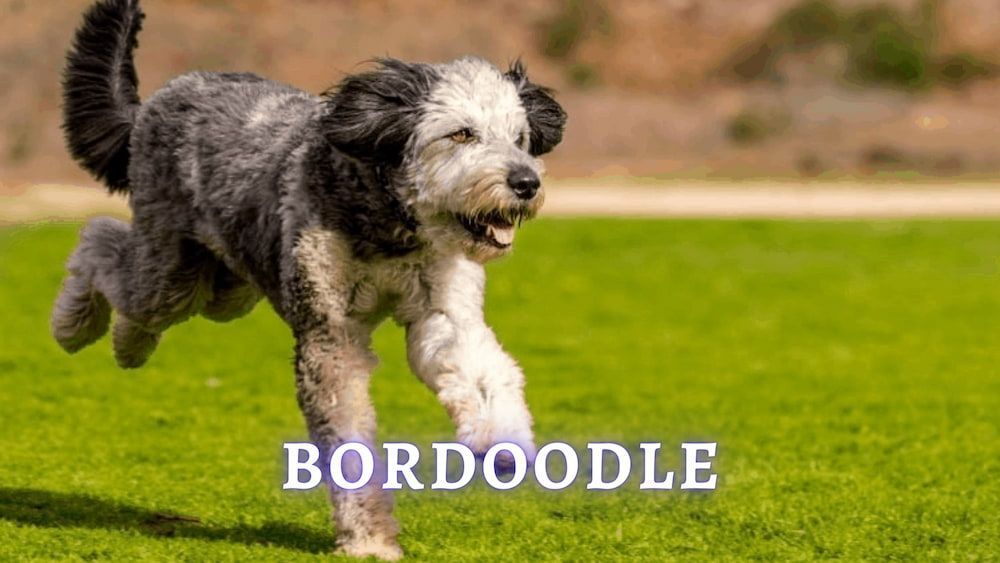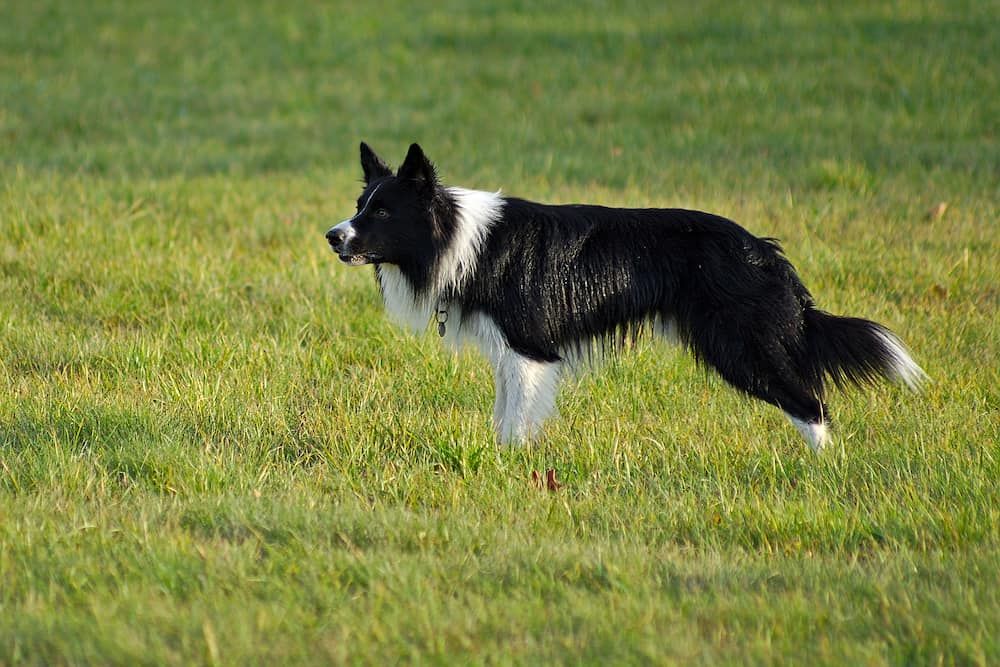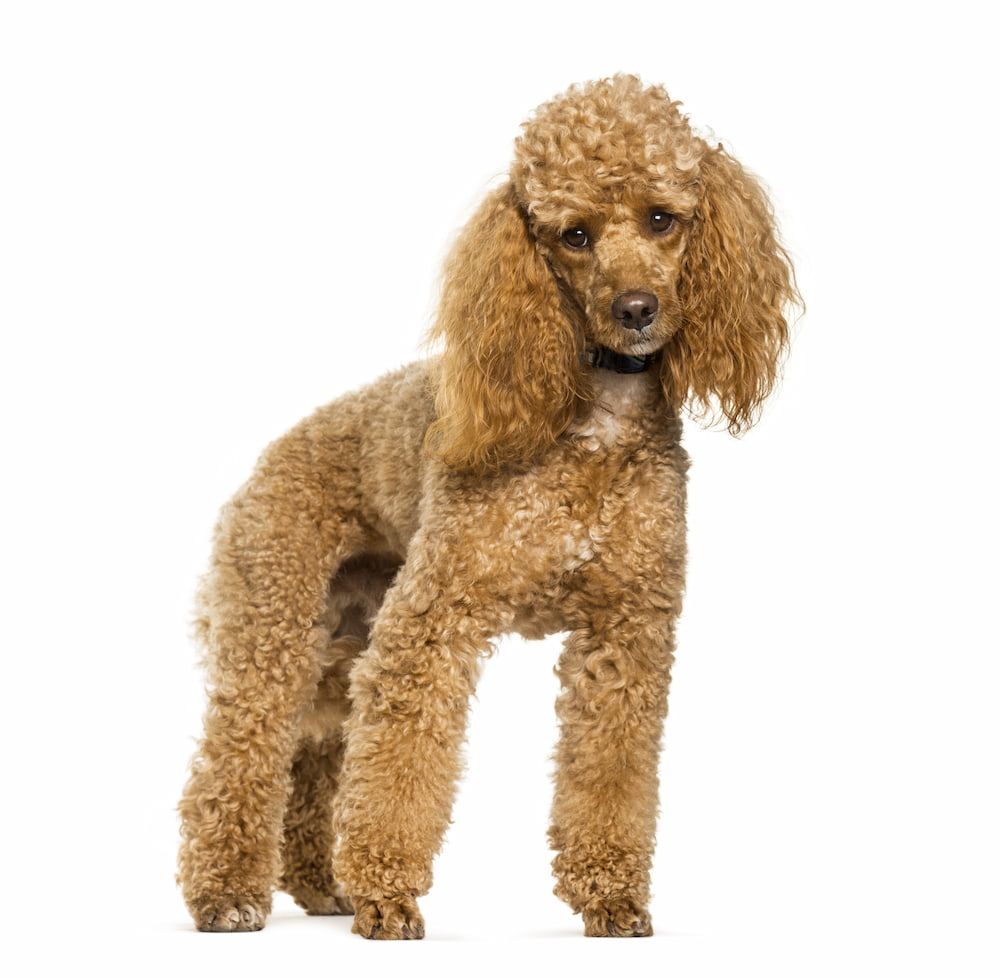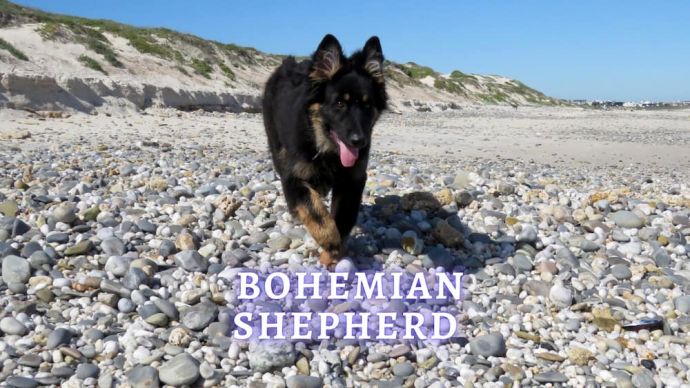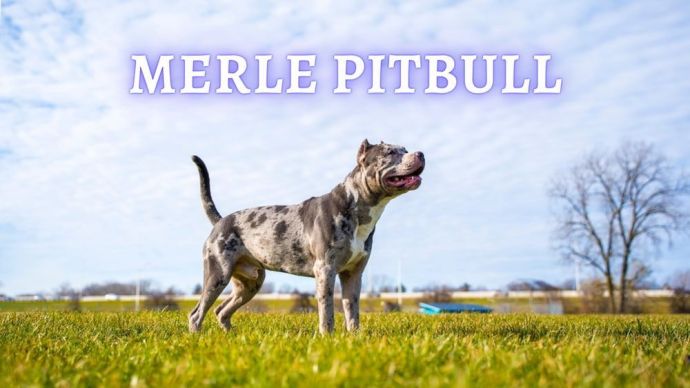Bordoodle: All About Border Collie Poodle Mix
Written by:
Author: Scott Jeffrey
Scott is a professional blogger with 12+ years of experience in writing, and holds an MA in anthropology. He has two cats as housemates. Also, Scott is passionate to research on pet-related topics such as dog training, puppy feeding, and cat health.
View all 63 articlesLearn about our editorial process and veterinary review board.
Viewed: 372
Updated on: 12/24/2022
The Bordoodle is a breed of dog known as the Borderpoo or Borpoo. They are a mixed breed dog derived from the Border Collie and the Poodle. The breed has captured many of the most desirable traits from each breed. They are excellent companion dogs, relatively low maintenance, and easy to train. They do not require much socialization and are one of the most adaptable breeds to new environments.
This breed bonds very quickly with its owners and becomes very attached. They are highly trainable, and their intelligence makes them quick learners. Bordoodles tend to be very even-tempered, which makes them great family pets. They are also known for being very good with children.
If you are interested in learning more about this breed and finding out if they would be a good fit for your family, check out more below in our deep dive into all things Bordoodle!
Characteristics:
| Weight | 30-60 pounds |
| Height | 15-22 inches |
| Coat | Black and white, red and gray, medium and soft. |
| Temperament | Pleasant, social, and protective |
| Similar breeds | Border Collie, Poodle |
| Best for | Seniors, Families with children or other pets |
| Lifespan | 12-15 years |
| Activity level | Medium (45 min -1 hour a day) |
Breed History
A bordoodle is not a breed that many would consider a designer dog. They are made from two highly sought-after breeds, but this breed was not popular until the 1980s when more crossbreeds of desirable, purebred dogs became more in demand.
The bordoodle is a cross between the border collie and the poodle. These two breeds were chosen for their specific characteristics desired in the offspring. The border collie is known for its intelligence and trainability, while the poodle is prized for its low-shedding coat and hypoallergenic properties.
When these two breeds are combined, you get an intelligent, trainable dog and a very loyal, low-shedding dog. Bordoodles have only become popular in recent years, but they are already proving to be one of the best family dogs.
Within the last 20 years, the number of breeders experimenting with the cross of these two breeds has boomed. The poodle’s hypoallergenic coat does not shed much, and when combined with the border collie’s trainability, it results in a dog that is a low-maintenance, intelligent, loyal dog. The breeders that have chosen to breed several litters of these dogs now have extremely desirable family pets. The poodle originated far before the border collie, and it is often the poodle gene used in many hypoallergenic dogs.
The border collie and poodle mix often results in a split mix of the features you would see in each dog. Most first-generation mix dogs can be the healthiest, and most breeders have discovered that the direct cross between two purebred dogs is often the best split results for traits from both breeds. Uniformity can be lost through multigenerational breeding, which often loses some of the standardized traits of the breed.
The two dogs originate from different origins. The poodle is a french and german dog that originated in the 15-16th century and was often bred for hunting waterfowl. The only people that could domesticate these fine dogs in this time period were often the upper class. The Border Collie originated in Northumberland along the border of England and Scotland. The breed was designed for herding livestock and has become one of the most popular in the world due to its intelligent and energetic nature.
Although the purebred poodle is an older breed, the border collie was not seen migrating away from its origin lands until the 19th century. They have since grown into one of the worlds most popular companion breeds.
The American Kennel Club does not recognize the breed because it is not a purebred dog. Still, the designer breed registry and American Canine hybrid club recognize the legitimacy of the breed. Looking at breeders through these organizations can often be the best way to find someone that can provide legitimate services for finding a quality puppy. The designer dogs kennel club are often the best places to check to find adaptable dog breeds and hybrid dogs that would make great family members.
Now that we know a little bit more about the history of the Bordoodles, we are going to move on to what you should look for in appearance when visiting a breeder or rescue program.
Appearance
Because the Bordoodle is a cross between the two breeds, it can be challenging to have one that conforms to a specific appearance. You may see some that look more like poodles and some like border collies. The ideal weight for this mix is between 15-22 inches, and the weight can range from 30-60 pounds. A bordoodle puppy will often indicate the size of your bordoodle in the future. The bordoodle’s coat will develop after they become young dogs. It can be tough with mixed breeds to tell if they receive the coat from the border collie parent or the purebred poodle parent.
The coat of the Bordoodle puppy is one of its most prized features. The coat is a low to non-shedding coat that is often compared to the feel of velvet. The coat can be either short or long and come in various colors. The most common colors are black, blue, brown, cream, gray, red, silver, white, and apricot.
The Bordoodles that take on more poodle traits will often have a curly coat, while the ones that take on more border collie traits will have a wavier coat. The hair on their face is usually longer, and they will have what is called a beard.
The bordoodle usually grows to a maximum of 60 lbs and weighs 30 lbs on the small side. They can be between 12-22 inches high and typically carry the build and appearance of a border collie. The coat is often where you will see the characteristics of a poodle. They will have a thick, curly coat that can be any color, and black and white is usually the most common color to see. Some of these hybrid dog breeds can take on the poodle’s coat.
READ MORE: Fluffy Dog Breed
What are mini Bordoodles?
Just like a mini poodle, or a miniature border collie, a mini Bordoodle is a smaller version of the regular Bordoodle.
Mini bordoodle dogs are usually between 10-15 inches tall and can weigh anywhere from 15-25 pounds. They have the same characteristics as regular Bordoodles, just in a smaller package.
One thing to remember is that these types of Bordoodles are rarer and involve generational breeding. The first breed usually starts with a mini poodle and a mini border collie. From there, another litter of the smaller pups will be bred in different lineages until the smaller traits persist for a litter. Mini Bordoodles are still Bordoodles and have the same great characteristics as their larger counterparts. The parent breeds are just different, and often bordoodle puppies are selected for their size to become eventual pet parents.
Interesting facts
The bordoodle is often confused with the Aussiedoodle, a mix of the Poodle and Australian Shepherd. The Australian shepherd and collie can often look the same when they have slightly different coats,s, and very similar temperaments. If you have any doubts, make sure that the breeder you are working with has records on the parents of your puppy.
Bordoodles can often receive heterochromia from the border collie side, when a dog has two different colored eyes.
The Bordoodle is often used as a working dog because of its intelligence and trainability. They are often used in disability assistance, search and rescue, and even as therapy dogs. Many programs are now seeking this breed because of their low shedding, great social nature, and easy training.
Temperament and Personality
The temperament of a Bordoodle is some of the best that you will find in any puppy or grown dog. They are some of the most friendly and affectionate dogs worldwide and can fiercely protect their family. The Bordoodle may be wary of a stranger, so socialization is essential; however, they are playful dogs and will quickly warm up to someone new with proper introductions.
The bordoodle is also great with children and other animals and is excellent with all family members. Bordoodles tend to get along with everyone, which is one of the reasons they make such great therapy dogs. The breed does best in a household where someone is home most of the time because they love companionship and will often get separation anxiety if left alone for too long.
Bordoodles are highly intelligent and easily trainable. They excel in obedience and agility training and love to please their owners. A Bordoodle can be trained to do just about anything with the right owner.
It is important to keep a bordoodle regularly engaged with toys and puzzles to keep their minds challenged, or they may become bored and destructive. Although these dogs need moderate activity, they will become destructive if you leave them without any entertainment. With training, positive rewards, and socialization, you can have a well-rounded dog that is obedient, loving, and a joy to be around.
Activity
The Bordoodle is a very active dog and will need a minimum of 45 minutes of exercise a day. As they grow, you could increase this to 1-2 hours a day, but as they get older, they will be content with a couple of shorter walks or play sessions.
Bordoodles are best suited for an active family that enjoys spending time outdoors. They love to run and play fetch, and they will also enjoy going on hikes or swimming. If you have a good-sized backyard or you are fine to commit to a few walks each day, your Bordoodle will be a happy pup.
Health
Like any dog, the Bordoodle has several health conditions they are susceptible to. Seeking pet insurance early on can often be a great way to manage future costs for your bordoodle. Here are some of the main predisposing conditions that are common in Bordoodles:
- Epilepsy: This is a neurological disorder that can cause seizures. It is often genetic and will require medication to control.
- Hip Dysplasia: This condition causes the hip joint to develop abnormally and can be very painful for your dog as they age. It is often genetic, but it can also be caused by injury or obesity.
- Eye Conditions: Because of the Poodle parentage, Bordoodles are often prone to developing eye conditions such as cataracts, glaucoma, and progressive retinal atrophy.
- Anxiety: Many Bordoodles suffer from anxiety, which can manifest differently. Some may become Separation Anxiety is a condition where your dog becomes anxious when they are away from you.
Other common forms of anxiety in dogs include noise phobias (to things like thunderstorms), social anxiety, and general anxiety.
Coat Care and Grooming:
The Bordoodle is a breed that is known for being a light shedder, but some of the puppies that develop traits from the border collie coat can become medium shedders. Puppies that develop more poodle-like traits often require less care and will have a shorter coat.
Most breeders recommend brushing your Bordoodle once every other day to prevent matting. If they have a shorter coat, you may be able to decrease your brushing schedule to just twice a week.
Bordoodles may need bathing once every 8-12 weeks. Bathing should be kept at a minimum for this breed as their coat is fairly self-contained, and they are not overly prone to allergies. When bathing a Bordoodle, make sure you choose a natural shampoo.
When grooming your bordoodle, check their eyes at least once a week. Because this breed can be prone to developing eye conditions, it is important to keep an eye on their vision.
Check their ears at least once a week as well. Bordoodles may require an ear cleaning regularly if used for hunting or herding and regularly in water.
READ MORE: Best Brush for Australian Shepherd: Review and Buying Guide
Feeding and Nutrition
Always choose high-quality food for a bordoodle so that you can keep them on a balanced diet and prevent weight gain. As this breed is prone to hip dysplasia, a regular healthy diet of 2- 2.5 cups of food each day with high-quality kibble should provide them with the necessary nutrients.
Puppies will eat more frequently, so provide them with 3-4 small meals each day until they are around 6 months old.
Choose age-appropriate food for your dog, select puppy food, and move towards senior food when your dog reaches 7 or 8 years of age. Supplementing with omega fatty acids can help to maintain stronger coat health and appearance.
Training
Bordoodles are highly intelligent, requiring a lot of stimulation to stay occupied and avoid boredom, unlike other dog breed types. Training this breed can be a challenge as they can be stubborn, but with patience and consistency, they can learn anything you want to teach them.
Crate training is often recommended for Bordoodles as it can help with housebreaking and with their anxiety. Other dog breed types like border collies benefit from this too.
Many Bordoodles excel in agility and other dog sports due to their intelligence and athleticism.
Most owners of Bordoodles recommend you start training early and often to reinforce behavior. These are intelligent dogs, even as puppies. If you notice that your dog is shy or anxious around other dogs or people, make an effort to socialize them early so they can learn trust.
Bordoodles can also inherit herding behavior from the purebred border collie. If you notice that your dog is herding smaller animals or your children, discourage the behavior so that they do not become too aggressive.
Early exposure to grooming and bathing will also make it more routine and less stressful for your dog when they need to be groomed in the future.
Adoption and Rescue
There are several adoption and rescue programs for Bordoodles, but many of these dogs are mixed with other breeds as well.
The best way to find a Bordoodle for adoption is to search online or contact your local animal shelters.
If you are looking to adopt a Bordoodle, consider what personality traits and physical traits you are looking for in a dog. Connect with a breeder in your local area and see if they can recommend any rescue programs or if they have any older dogs that they may be willing to sell.
Breeders and price
Bordoodles are dogs that are in demand today. Even though they are not purebred dogs, they can be expensive for a hybrid. The price will vary based on the breeder, and you will need to make sure that you have a reputable breeder.
You can find a Bordoodle for sale from $700-$1600. The price will depend on the breeder, the parents of your puppy, and their coat colors and markings.
When looking for a Bordoodle, it is recommended that you find a breeder who has dogs that have lived into healthy adulthood without a lot of health problems.
Check out the kennel or home where the puppies are being raised and ensure that it is clean and well-kept.
The breeder should be able to answer all your questions about the breed and provide you with a contract that states the health guarantees for your puppy.
READ MORE: Sheepdog Poodle
Conclusions
If you are seeking a puppy that is intelligent and active and will provide you with years of companionship, the Bordoodle may be the right dog for you. This hybrid is a mix of the Border Collie and Poodle and is known for being an excellent family dog.
People also ask:
Are Bordoodles good dogs?
Bordoodles are great dogs for active people or families. They are intelligent and require a lot of stimulation, so they need owners who can provide them with plenty of attention. They can be stubborn, but with patience and consistency, they will learn anything you want to teach them.
Do border doodles shed?
Some of the puppies with more of a border collie coat will shed. Bordoodles with more poodle qualities will often shed less because they have a wavier coat.
Do Bordoodles calm down?
With regular exercise each day, you can usually expect your Bordoodle to be calm indoors. During the first few years of their lives, they can be particularly energetic, but a Bordoodle can settle down as they age, usually around 3 years old.
Can Bordoodles be left alone?
Bordoodles can be left alone at home, but it is usually best if you crate train them or leave them with a toy or some form of entertainment.
 Dog Breeds Aussiedoodle: Breed Info, Personality, Activity Level and Life Span
Dog Breeds Aussiedoodle: Breed Info, Personality, Activity Level and Life Span - 1282
- 0
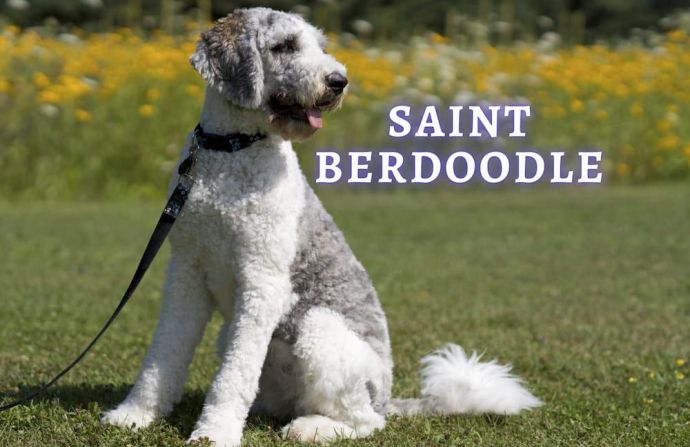 Dog Breeds Saint Berdoodle: Saint Bernard and Poodle Mix Size, Personality and Care
Dog Breeds Saint Berdoodle: Saint Bernard and Poodle Mix Size, Personality and Care - 1435
- 0
 Dog Veterinary Tips Why is my Dog throwing up: Causes and Preventing (Veterinary Advice)
Dog Veterinary Tips Why is my Dog throwing up: Causes and Preventing (Veterinary Advice) - 23424
- 5
 Dog Care Why Is My Dog Bleeding From Its Butt? Causes and treatment of rectal bleeding in the dog
Dog Care Why Is My Dog Bleeding From Its Butt? Causes and treatment of rectal bleeding in the dog - 22076
- 0
 Dog Care My Dog Keeps Scratching His Mouth: Reasons Why Your Dog Scratching Face
Dog Care My Dog Keeps Scratching His Mouth: Reasons Why Your Dog Scratching Face - 17561
- 1









